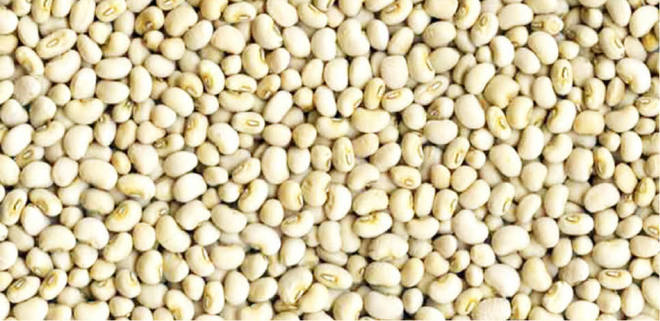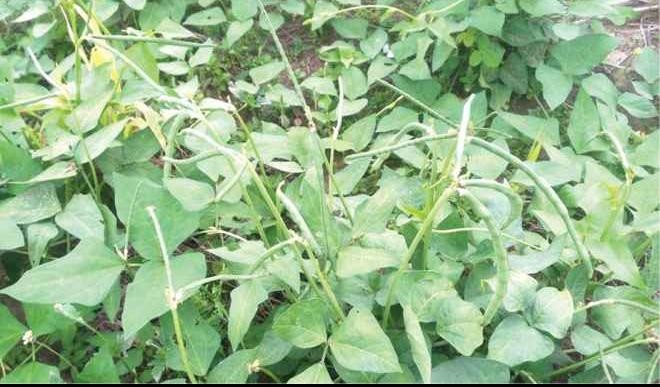There is growing emphasis on the need for cowpea farmers in Sokoto, North-western Nigeria, to embrace new cowpea varieties and ensure right farming practices to tackle climate change impacts.
Cowpea, or beans as it is more commonly known in Nigeria, is noted as a versatile legume of pronounced economic importance, and a major source of protein with its dried stems and leaves thriving as animal feeds.
It is a major source of income for the over 6000 cowpea farmers across Sokoto State, with the major producing areas in the state identified to include Gada, Ilela, Tangaza, Tambuwal and Dange/Shuni.
However, the sad experiences of last year appear to have left negative impression on the minds of affected cowpea farmers in the state. Alhaji Sani Zagi, 62-year-old, a popular beans farmer reflects on how rainfall variability of 2017 negatively impacted on his beans production.
“Due to shortage of rainfall last year, I couldn’t realise anything. I couldn’t get anything from beans for two years,” he explained.
He said the only thing he got from his cowpea farming last year were 816 bundles of dried beans leaves, ‘harawa’, used as animal feed. “I did not get even a measure of the produce from the entire farm where I usually get over 300 bags,” he recalled.
Though the Nigeria Meteorological Agency (NIMET) predicted early cessation of rainfall in many parts of the North in 2017, rainfall induced crop failure was recorded by farmers in the state with negative impact on productively, income and food security.
The result, the farmers said, was a radical drop in local beans supplies. This was recorded at a time the Food and Agriculture Organisation (FAO), in its State of the World’s Food and Nutrition report pointed at the need for more effort in food production worldwide.
“As reflected in the Sustainable Development Goal 2 (SDG2), one of the greatest challenges the world faces is how to ensure a growing global population, projected to rise to around 10 billion by 2050, has enough food to meet the people’s nutritional needs. To feed another two billion people in 2050, food production will need to increase by 50 percent globally”, FAO had stated.
The SDG2 has a target to “end hunger, achieve food security, improve nutrition and improve agriculture.”
Another beans farmer, Alhaji Ahmed Abubakar Kakale, whose loss to the 2017 rainfall variability was even worse than Zagi’s said: “After planting, and with adequate rainfall, there is usually bumper harvest for beans. But when there is inadequate rain or it comes with problem such as intervals, we don’t grow beans in abundance.
“When it is almost harvest period and the rain stops, it also causes problem to the crop,” he lamented.
Kakale who has spent 25 years in beans farming and produces between 800-1000 bags of beans when the harvest is good, disclosed that he lost over 90 percent of the produce to inadequate rainfall last year.
“The 2017 shortage of rainfall denied us bumper harvest. I got less than 100 bags,” he revealed.
The Cowpea Farmers Association Sokoto State chapter chairman, Abubakar Mohammed, said: “Our number one challenge is a nature’s issue; you don’t start producing cowpea until June, July when the rain has stabilised.”
He recalled that following the 2017 rainfall variability, many farmers who did not plant early, could not reap anything.
“The rain just stopped. It was coming just once a week or once in 10 days, so when that happened, those who planted late cannot harvest and those who planted early, long time duration, cannot harvest. So that was the challenge we had,” he said.
He, however, said there are new cowpea varieties introduced that could tolerate the shortage of rainfall and positively reflect in the crop’s yield.
He said at a workshop held in Kano with the International Institute of Tropical Agriculture (IITA) and Agriculture Development Programme (ADP), the new varieties was introduced to them.
“The new varieties can tolerate our environment and they have more yield than the old beans that we were using. The new varieties have short time duration and before the rain stops, you have good yield.
“So we are trying our best to sensitize the farmers through workshops for the local farmers to introduce new varieties to them,” Mohammed stated.
The chairman said the association was collaborating with the ADP in the state to organise demonstration farms at the local government areas to introduce to farmers the new cowpea varieties.
“We selected two communities from each local government area where we have done the demonstration. It helped farmers gain experience, from the planting aspect to spacing, fertilizer application, weeding to the end of the process,” he explained.
“The farmers saw the impact, the high yield, and have started using the new varieties. We started in 2016, we hope to do it this year,” he said.
The chairman assured that they have enough of the seedlings and called on cowpea farmers who are yet to embrace the new varieties to do so.
“For me I used mainly the varieties I got from ADP, and they all came out successfully but the other ones that I planted late because the work was too much, I did not harvest anything from them,” the chairman stated.
However, for Alhaji Zagi, he is already preparing his farms for this year’s planting season. He is encouraged by the new varieties even as he asserted: “Losses cannot stop us from conducting our farming business. Hazards notwithstanding, life continues.”
He added: “We thank God that we are getting support from government through the supply of fertilizer and seedlings.”
Similarly, Kakale declared: “We will continue to engage in cowpea farming because there is always gain despite the hazards involved. We always make up the loss.”
He however lamented: “We don’t get adequate supply of fertilizer and other inputs. As a large scale farmer, I usually get far below what I need. A farmer who produces 1,000 bags deserves as much as 100 bags of fertilizer but we do not get more than the average farmers anytime they distribute the items, there is no difference at all.”
“We also need soft loan in good time for our activities,” he added.
For 24-year-old Ibrahim, a grain merchant at the Sokoto central market, following last year’s shortage of rainfall and the subsequent shortage, prices rose to N40,000 a bag from between N23,000-N25,000 in a normal situation. He said this year, it cost N30,000-N32,000
“When beans becomes scarce in Sokoto, we travel to states such Katsina to purchase it. We spend N35,000-N36,000 including transportation for a bag and we sell at N38,000,” he said
He solicited for government support for the dealers. “We need loan to buy enough for sale,” he pleaded.
The Project Manager, Sokoto State Agricultural Development Project (SADP), Abubakar said efforts were being intensified towards enhancing agricultural production through sustainable farming techniques and strengthening the capacity of farmers to adopt practices that promote sustainable development.
Malami noted the farm support services that the programme had been rendering to farmers to include improved farm and water management practices, crop protection measure, extension services, improved seeds, weed control, distribution of fertilizer and irrigation pumps, among others.
He urged farmers in the state to embrace improved farming practices to boost their productivity.
The agricultural development spearhead expressed commitment towards resilient and robust sector.





